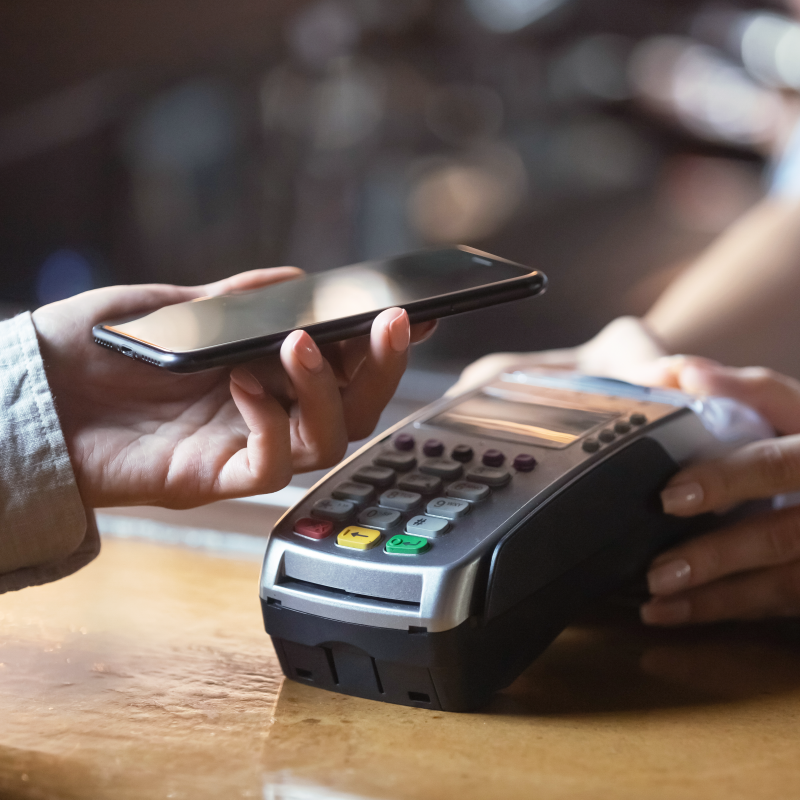Mexico's mobile payment market is experiencing significant growth and is poised for even greater expansion in the coming years. Several key factors are driving this upward trajectory, creating a dynamic landscape for consumers, businesses, and financial institutions alike. By 2025, these growth drivers are expected to further solidify mobile payments as a mainstream method of transaction across the country.
According to Next Move Strategy Consulting, the global Mexico Mobile Payment Market size value is predicted to reach USD 6.63 billion by 2030, with a CAGR of 14.8% from 2024 to 2030
1. Surging Smartphone Penetration and Mobile Internet Adoption:
The increasing affordability and accessibility of smartphones, coupled with the expanding coverage and speed of mobile internet, are fundamental drivers of mobile payment adoption. A significant portion of the Mexican population now owns smartphones, providing a readily available platform for mobile payment solutions. As mobile internet penetration continues to rise, more individuals, even in previously underserved areas, gain access to the digital infrastructure necessary for mobile transactions. This widespread access creates a large potential user base for various mobile payment methods, including mobile wallets, QR code payments, and in-app purchases. For instance, by 2022, smartphone penetration in Mexico had reached approximately 80%, indicating a vast majority of the population has the necessary technology to engage in mobile payments.
2. E-commerce Boom and Preference for Digital Transactions:
Mexico is the second-largest e-commerce market in Latin America, and this sector is experiencing robust growth. As more Mexicans embrace online shopping, the demand for secure and convenient digital payment methods is escalating. Mobile payments offer a seamless and efficient way to complete online transactions, contributing significantly to their increasing popularity. The integration of mobile payment options by major e-commerce platforms and the growing consumer trust in online transactions are further fueling this growth. The Mexican Association of Online Sales has reported annual growth rates of around 30% in the e-commerce sector, highlighting the strong momentum behind digital payment adoption for online purchases.
3. Increasing Consumer Preference for Contactless Payments:
The convenience and speed offered by contactless payment methods, including those facilitated by mobile devices like NFC-enabled smartphones and QR codes, are attracting a growing number of consumers in Mexico. Contactless payments streamline the checkout process, reducing transaction times and enhancing the overall shopping experience. This preference for quick and hassle-free payments is a significant driver for the adoption of mobile payment solutions that support contactless technology. The COVID-19 pandemic further accelerated this trend due to hygiene concerns associated with physical contact with payment terminals.
4. Government Initiatives and Regulatory Support:
The Mexican government is actively promoting financial inclusion and the digitization of the economy through various initiatives. These efforts often include the development of digital payment infrastructure and the establishment of a regulatory framework that fosters innovation and consumer protection in the mobile payments space. For example, the introduction of platforms like CoDi (Cobro Digital), a QR code-based payment system developed by the Bank of Mexico, demonstrates the government's commitment to encouraging digital transactions. Such initiatives build trust in digital payment methods and drive their adoption among both consumers and businesses.
5. Growing Adoption by Small and Medium-sized Enterprises (SMEs):
SMEs in Mexico are increasingly recognizing the benefits of accepting mobile payments, including enhanced operational efficiency, streamlined transactions, and the ability to cater to the evolving preferences of digitally savvy consumers. Mobile payment solutions offer a cost-effective and accessible way for smaller businesses to participate in the digital economy and expand their customer base. The ease of setting up and using mobile payment systems makes them particularly attractive to SMEs, contributing significantly to the overall growth of the market.
6. Strategic Partnerships and Technological Innovations:
Collaborations between banks, fintech companies, mobile network operators, and retailers are playing a crucial role in expanding the reach and usability of mobile payments in Mexico. These partnerships often lead to the development of innovative mobile payment solutions, enhanced security features, and wider acceptance networks. The integration of advanced technologies like biometrics for authentication and the increasing popularity of digital wallets are also contributing to the growth and sophistication of the mobile payment ecosystem.
7. Financial Inclusion Imperative:
Mobile payments offer a significant opportunity to enhance financial inclusion in Mexico, particularly for the unbanked and underbanked population. Mobile money solutions and digital wallets can provide access to financial services for individuals who may not have traditional bank accounts, enabling them to participate more fully in the digital economy. As mobile penetration is significantly higher than banking penetration in Mexico, mobile payments can bridge this gap and bring more people into the formal financial system. Government and private sector initiatives focused on leveraging mobile technology to reach underserved communities are expected to further drive the adoption of mobile payments as a tool for financial inclusion.
In conclusion, the Mexico mobile payment market is experiencing robust growth driven by a confluence of factors including technological advancements, changing consumer behavior, supportive government policies, and the imperative for greater financial inclusion. As these drivers continue to exert their influence, mobile payments are poised to become an increasingly integral part of the Mexican financial landscape by 2025 and beyond.





Comments